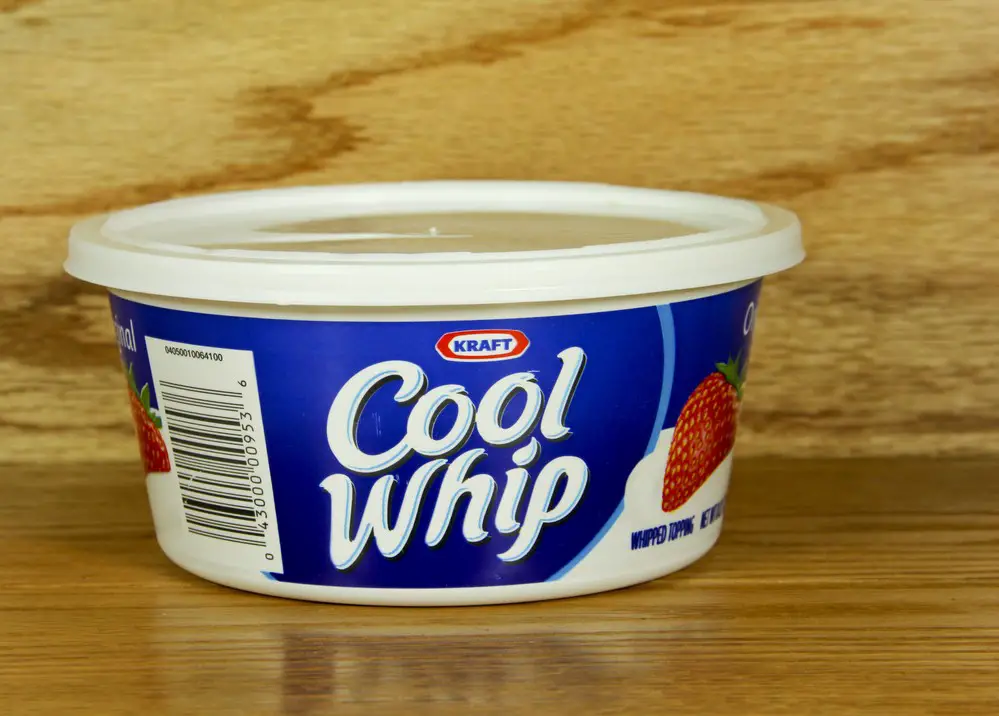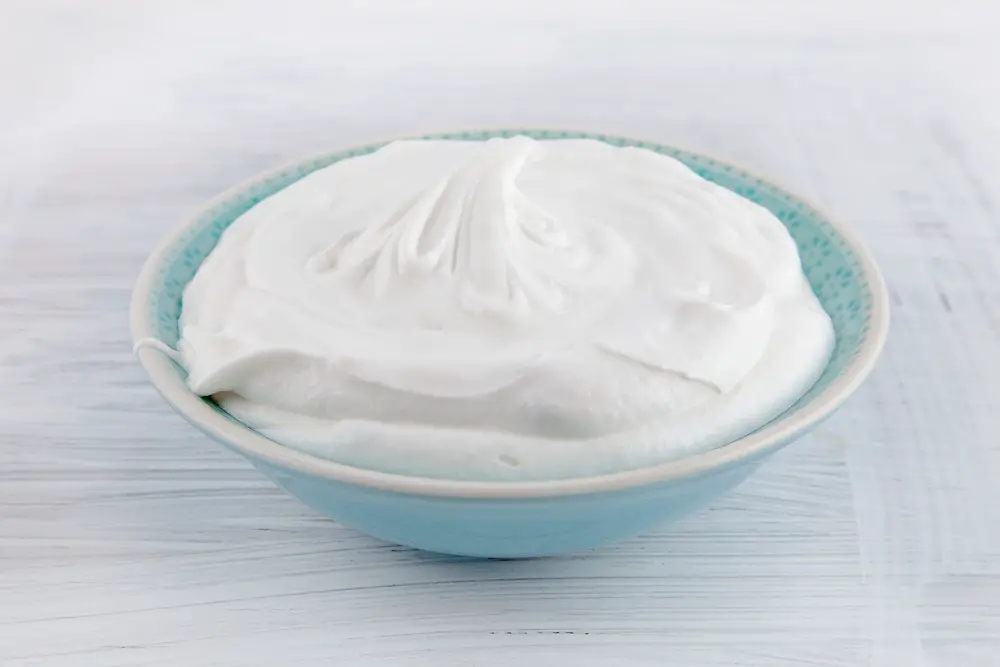Cool Whip, a popular whipped topping, often graces the tops of pies, cakes, and hot cocoa, adding a layer of sweetness and a touch of elegance to many desserts. However, as more individuals adopt plant-based lifestyles, the question arises: is there a vegan alternative to Cool Whip? The answer is yes, with numerous options to create that perfect whipped topping without animal by-products (i.e., dairy-free).
In today’s culinary world, vegan Cool Whip alternatives are abundant, ensuring that those adhering to plant-based diets can enjoy delicious whipped cream without compromising their values. From pre-made store-bought products to homemade recipes, numerous ways exist to achieve that desired creamy texture and taste while remaining cruelty-free. Creating your vegan whipped cream masterpiece is possible and enjoyable with the right tips, tricks, and recipes.
Key Takeaways
- Vegan alternatives to Cool Whip are available to suit various dietary needs
- Homemade and store-bought options provide versatile choices for vegan whipped cream
- Using appropriate techniques and recipes ensures success in creating plant-based whipped toppings

Vegan Cool Whip Alternatives
Many alternatives to Cool Whip exist for those following a vegan lifestyle. These alternatives can be made at home, like coconut and aquafaba, or purchased from well-known vegan whipped cream brands.
Coconut Whipped Cream
Coconut whipped cream is a popular vegan alternative to traditional whipped cream made from dairy. The key ingredient is the solidified coconut cream from a can of full-fat coconut milk. To make it, refrigerate a can of full-fat coconut milk overnight. Once chilled, scoop out the solidified coconut cream and whip it with a hand or stand mixer until fluffy. Add a sweetener, such as powdered sugar or agave nectar, to achieve the desired sweetness.
Popular store-bought options for coconut whipped cream include So Delicious Cocowhip, Trader Joe’s Coconut Whipped Topping, and Nature’s Charm Coconut Whipping Cream.
Aquafaba Whipped Cream
Aquafaba, the liquid from a can of chickpeas, is another vegan whipped cream alternative. To prepare, whip the aquafaba with cream of tartar until stiff peaks form. Gradually add sweetener and vanilla extract while continuing to whip. This light and airy whipped cream is perfect for topping desserts and adding a touch of sweetness.
Vegan Whipped Cream Brands
Various vegan whipped cream brands provide delicious alternatives to Cool Whip. Some notable products include:
- Truwhip: A creamy alternative made without hydrogenated oils and no high fructose corn syrup.
- 365 Oat-Based Whipped Topping: A non-dairy, oat-based whipped topping from Whole Foods Market.
- Reddi-Wip Coconut Milk & Reddi-Wip Almond Milk: Non-dairy whipped toppings made by the popular Reddi-Wip brand that offer light and creamy textures.
These vegan whipped cream options cater to different dietary preferences and can easily be swapped for traditional Cool Whip in recipes.

Vegan Whipped Cream Recipes
Coconut Whipped Cream Recipe
Try the simple coconut whipped cream recipe to make a delicious vegan whipped cream. You’ll need the following ingredients:
- 1 can (13.5oz) full-fat coconut milk
- 1/3 cup powdered sugar
- 1 tsp vanilla extract
To prepare, first, chill the coconut milk in the fridge overnight. This helps separate the cream from the liquid. Scoop the solid coconut cream into a mixing bowl, leaving the liquid behind. Whip the cream with a hand or stand mixer until it becomes fluffy. Gradually add the powdered sugar and vanilla extract until creamy and smooth. Your coconut whipped cream is ready to be used as a dairy-free topping for desserts like pies, cakes, and fruit.
Aquafaba Whipped Cream Recipe
Another vegan whipped cream option is aquafaba, the liquid from a can of chickpeas. Here’s what’s needed for this recipe:
- 1/2 cup aquafaba (from 1 can of chickpeas)
- 1/4 tsp cream of tartar
- 1/2 cup powdered sugar
- 1 tsp vanilla extract
To begin, drain the chickpeas and reserve the liquid (aquafaba). Combine the aquafaba and cream of tartar in a mixing bowl and whip until soft peaks form. Add the powdered sugar and vanilla extract, continuing to whip until stiff peaks form. This aquafaba whipped cream is nut-free and soy-free for those with allergies or dietary restrictions.
Vegan Whipped Cream Varieties
Aside from the homemade recipes, there are several store-bought vegan whipped cream options. Many of these whipped toppings are dairy-free, gluten-free, and soy-free, catering to various dietary needs. Some whipped cream varieties use almond milk, while others rely on coconut oil or alternative sweeteners to achieve a similar taste and texture to real whipped cream. Popular options include Trader Joe’s Coconut Whipped Topping and Soyatoo! Dairy-Free Whipped Topping in a box or spray can.
With these recipes and products available, it is possible to enjoy a luscious, creamy vegan whipped cream atop your favorite dessert without any dairy, making it both cruelty-free and suitable for various dietary needs.

Whipped Cream Tips and Tricks
Choosing the Right Ingredients
When making vegan whipped cream, choosing the right ingredients is essential. While traditional whipped cream is made from dairy, vegan alternatives include coconut, almond, and aquafaba. For a rich, creamy texture, full-fat coconut milk is recommended. Aquafaba, the liquid from canned chickpeas, or “bean water,” is popular for its impressive whipping abilities.
Always check labels for lactose, sodium caseinate, or other non-vegan components. To ensure a more natural, healthier option, look for those with minimal additives such as corn syrup, sorbitan monostearate, polysorbate 65, and beta carotene.
Whipping Techniques
Creating fluffy vegan whipped cream requires the proper whipping technique. Use chilled ingredients, as cold vegan creams will whip up better. You can use either a hand or stand mixer for efficient whipping.
For coconut milk-based vegan whipped cream:
- Refrigerate the can of coconut milk overnight.
- Separate the solid cream from the liquid and place the solid cream in a bowl.
- Whip until it is light and fluffy.
For aquafaba-based vegan whipped cream:
- Drain the liquid from a can of chickpeas into a large bowl.
- Using a mixer, whip the aquafaba until it reaches soft peaks.
- Gradually add sugar and other desired flavorings while continuing to whip.
Storing and Serving
Store your vegan whipped cream in an airtight container in the refrigerator. It is best used within 3-4 days for optimal freshness. Before serving, give it a quick whip to regain its fluffy texture.
Vegan whipped cream can be used in various desserts such as fruit salads, ice cream, brownies, pancakes, or served with fresh berries. The versatility of this dairy-free alternative allows for endless options when creating delicious vegan treats.
Vegan Whipped Cream for Special Diets
Finding the right dessert topping can be challenging when it comes to special diets. Vegan whipped cream is a fantastic option for those avoiding dairy, and there are even more variations to cater to specific needs.
Sugar-Free Vegan Whipped Cream
For people looking to cut down on sugar, sugar-free vegan whipped cream alternatives are available. Coconut whipped cream is one such option, simply mixing chilled coconut milk with a natural sugar-free sweetener like stevia. Aquafaba, which is the liquid drained from a can of chickpeas, can also be whipped into a sugar-free delight. Just add a sugar-free sweetener and whip until it forms stiff peaks. Both alternatives can be topped on your favorite dessert without spiking your blood sugar levels.
Soy-Free and Nut-Free Options
For those with soy or nut allergies, vegan whipped cream can still be enjoyed using alternative ingredients. Coconut whipped cream is an excellent choice since it’s both soy-free and nut-free. Chill a can of coconut milk in the refrigerator overnight, then whip the solidified cream with your desired sweetener. As mentioned earlier, another option is to create a whipped cream using aquafaba. This ingredient is free from soy, nuts, and gluten, making it a versatile choice for special diets.
Gluten-Free Whipped Cream
Since most conventional whipped creams are made using dairy, which can contain additives with gluten, gluten-free individuals may want to find an alternative. Vegan whipped cream is a perfect choice for those following a gluten-free diet. Both coconut whipped cream and aquafaba whipped cream are naturally gluten-free options. Always check ingredient labels for additional mixed-in sweeteners or flavors to ensure your whipped cream remains gluten-free, as some may contain gluten derivatives.
By exploring different vegan whipped cream options, individuals with dietary restrictions can still enjoy delicious, creamy toppings on their favorite desserts without compromising their health needs. With simple ingredients like coconut milk, aquafaba, and various sweeteners, anyone can relish in delightful dairy-free and allergen-free dessert options.
FAQs
Is Cool Whip vegan?
Cool Whip is not vegan as it contains dairy-derived ingredients like skim milk and caseinate. However, there are similar vegan-friendly whipped toppings available in the market.
Are there any Cool Whip alternatives for vegans?
Yes, there are several vegan alternatives to Cool Whip. Some popular options include Soyatoo Soy Whip, Rice Whip, and Coco Whip, all dairy-free and made from plant-based ingredients.
Can I make my own vegan whipped cream at home?
Absolutely! Homemade vegan whipped cream can be made using ingredients like coconut milk, aquafaba, or silken tofu. Beat or blend the ingredients until a whipped consistency is achieved, and sweeten it to taste with a sweetener of your choice.
For coconut whipped cream, use chilled, full-fat coconut milk
For aquafaba-based whipped cream, use the liquid from a can of chickpeas
For silken tofu whipped cream, blend the tofu with sweetener and vanilla extract
Does vegan whipped cream taste similar to traditional Cool Whip?
Vegan whipped cream alternatives often have a fluffy and airy texture similar to traditional Cool Whip. The taste might differ slightly depending on the base ingredients, such as coconut, soy, or rice. However, vegan whipped cream options are usually delicious and satisfying.

